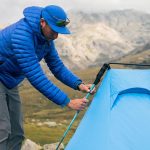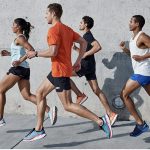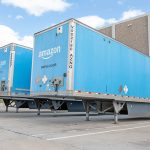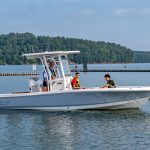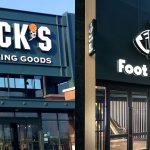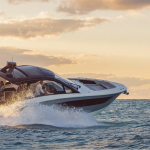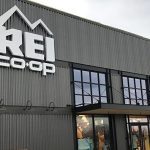Although the current recession is putting price/value relationships at the top of outdoor enthusiasts purchase decisions, environmental concerns play a much larger role in the way consumers select and purchase products for their recreational pursuits. Younger and more eco-friendly consumers are looking for more than just recycled hang tags and marketing spin.
Doing the right thing is nothing new to Timberland. More than 20 years ago, the company established its community engagement platform, a program that is firmly in place today. Employees get 40 hours of paid leave annually to work on community service projects. This year, Timberland is embracing a campaign focused on community re-greening. Employees help with service events and with retail and industry partners to create green spaces by tree planting or reconstructing buildings with environmentally sustainable materials.
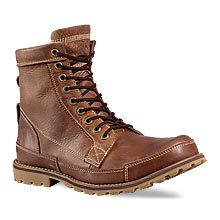 Jeffrey Swartz, CEO of Timberland, said that in the recent times of economic uncertainty, sustainable business practices are increasingly more important. “Many consumers today are understandably more concerned about job security, financial security, bigger and more immediate issues than whether the company theyre buying from is environmentally conscious,” said Swartz. “Unfortunately, the climate crisis doesnt go away because there are more urgent matters in front of us. In fact, if we dont keep our eye on the ball, before long we may be dealing with difficult environmental times in place of or in addition to difficult economic times.”
Jeffrey Swartz, CEO of Timberland, said that in the recent times of economic uncertainty, sustainable business practices are increasingly more important. “Many consumers today are understandably more concerned about job security, financial security, bigger and more immediate issues than whether the company theyre buying from is environmentally conscious,” said Swartz. “Unfortunately, the climate crisis doesnt go away because there are more urgent matters in front of us. In fact, if we dont keep our eye on the ball, before long we may be dealing with difficult environmental times in place of or in addition to difficult economic times.”
Swartz admitted that the importance of green products might be a tough sell to many consumers right now. “Were staying the course as far as maintaining our focus on environmental consciousness, both in how we operate our business and how we design and make our products, and are hoping those choices will continue to resonate, even quietly, with consumer,” he concluded.
Timberlands internal policy is based on corporate responsibility. Under their environmental stewardship pillar, the company has established the goal of being carbon neutral by 2010. “Carbon neutrality for Timberland will primarily be through emission reductions, rather than carbon offsets,” clarifies Betsy Blaisdell, Timberlands manager of environmental stewardship. “We are dedicated to reducing our energy demand at Timberland-owned facilities and with air travel. To cut back on the companys transportation carbon footprint, web-based communication has been leveraged, with technologies such as Skype and web conferencing negating the need for excessive airplane travel. “We are aggressive in addressing our own footprint so we can have credible conversations with [our] business partners [about] reducing theirs,” explained Blaisdell.
Corporate responsibility also drives Timberlands on-going efforts to create fully recyclable product. Two years ago, the company launched a trial effort to take back old boots. The U.S.-based initiative gave the company great insight into recycling. “First of all, it was difficult getting people to part with their old boots,” recounts Blaisdell. “Since the boots are built to last, they hold up well, and people love the worn-in feel.” What boots they did manage to gather were sent to Timberlands factory in the
Critical to Timberlands goal of achieving corporate and product sustainability is reaching out to the Millennial Generation (consumers born between 1980 and 2000). According to authors Neil Howe and William Strauss in their best-selling book, Millennials Rising, Millenials are poised to become the next great generation. Howe and Strauss suggest that Millennials are more likely to be defined as group-oriented, and demonstrate a can-do ethos.” Their prediction is that the Millennial generation will be “more wholesome, more modest, more old fashioned with their gender courtesies” and will “rebel against the culture by cleaning it up, rebel against political cynicism by touting trust, rebel against individualism by stressing teamwork, rebel against adult pessimism by being upbeat, and rebel against social ennui by actually going out and getting a few things done.” These attributes fit nicely with Timberlands goals for attracting youth who are concerned about sustainability and recycling.
Jay Steere, Timberlands director of outdoor product, explained, “the younger consumer is thinking of environment and sustainability and how that can appear in different places. The single biggest problem that the outdoor industry faces today is drawing users into the industry, converting consumers. Our outreach is focusing on youth, in particular, the way you speak to them. At Timberland, we offer product that works on two levels, on trail and with value system. It is a win-win situation for companies who want to be around the next 30 years working with that generation.”
In order to speak to the millennial consumer through product, Timberland is relying on two fronts. “Our new Mountain Athletics line is based on Speed and Green,” explained Steere. “This is our first series of footwear aimed at outdoor active millennial consumer. We are offering an adrenaline-based footwear line for multi sport use (speed hiking and trail running) that has a very overt green content.” Shoes in the Mountain Athletics line will carry both Timberlands Nutritional Label and the Green Index.
Timberland is betting that the companys two-decade old commitment to corporate responsibility and socially responsible manufacturing will strike a chord with young consumers. Margaret Morey Reuner runs Timberlands Values Marketing group and explained that despite the companys long history of selling hiking boots to youthful consumers, the outreach to the millennium generation took some effort. “We dipped our toes in the water at first,” explained Reuner. “Communicating via the Internet and twitter wasnt something a traditional
Reuner has also been instrumental in developing the companys Earthkeeper Network, a movement to recruit one million people to become part of an online network designed to inspire real environmental behavior change. Earthkeeper.com started out as a blog, and in April, will re-launch with a robust array of podcasts, audio and video streams. Content on the site will be user generated, with some internal content. In January, Earthkeeper custodians conducted man-on-the-street interviews at the Sundance Film Festival, with questions like “If you were a tree, where would you be planted?” “We generate content from this, parse it out, and invite consumers to engage in conversation,” explained Reuner. The goal is to register a million earthkeepers worldwide.
People registering will make a pledge to lessen their impact on the earth, whether through starting a car pool or replacing lightbulbs to volunteering to work a reforestation project in
“We have three challenges as manufacturers,” explained Steere. “We want to make sure product is designed for end use and aesthetic end use; it has to be within price expectations; and we need green content. The good news is that in todays climate of materials, manufacturers can do that.”
For fall 2009, Timberland has an exclusive partnership with Green Rubber to make outsoles that have 42 percent recycled tire rubber content. The goal is to provide a cost-effective supply of rubber and help with the worldwide problem of rubber tire waste. Timberland is also introducing a series of day hiking and backpacking shoes that feature Vibrams Ecostep outsole, an environmentally friendly rubber that has yet to be used on high-performance outdoor footwear.
Steere explained, “We are taking ethics of environmentally sustainability higher up the mountain.”
When sporting goods retailers are faced with consumers looking for eco-friendly products, Timberland is providing a full spectrum of answers that address questions about raw materials, manufacturing and corporate responsibility.


